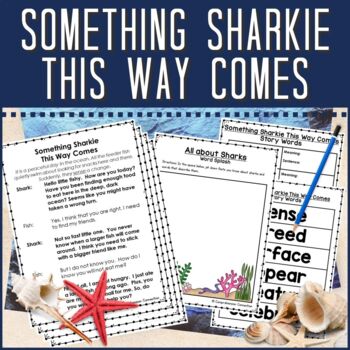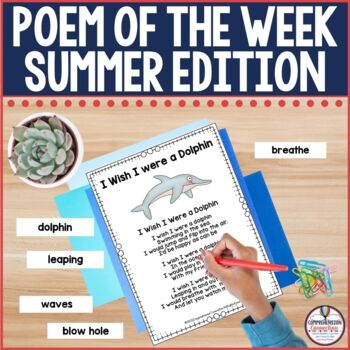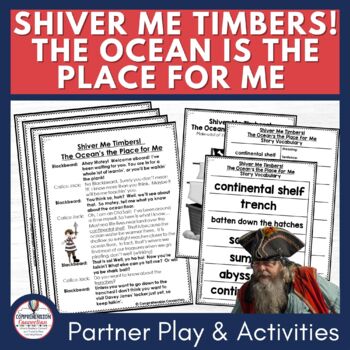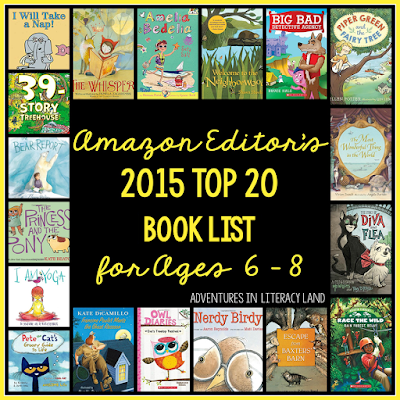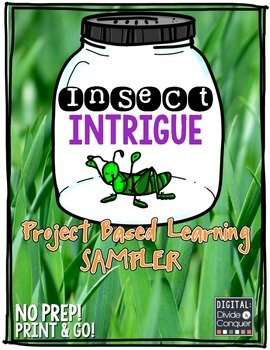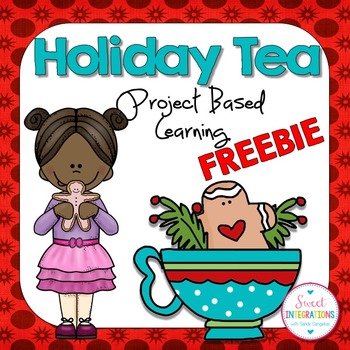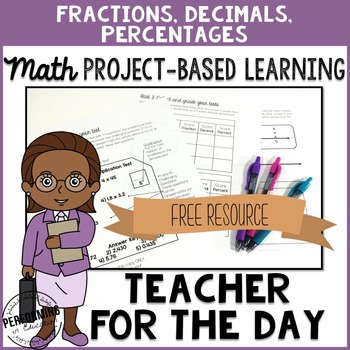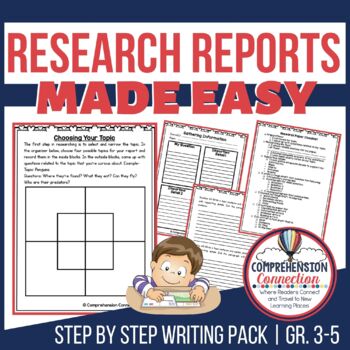How can you tell a student is reading a text that is too hard? What signs do children give that they've met their limit? To learn the "look fors", head over to Comprehension Connection where you'll find this blog post. (it has been relocated to Carla's blog).
Adventures in Literacy Land: Comprehension Connection
Showing posts with label Comprehension Connection. Show all posts
Showing posts with label Comprehension Connection. Show all posts

Spring Books that Will Make You Flip

Exploring Software and Websites to Support Reading Comprehension
As teachers, we look for new ways to present information all...the...time, don't we? Pinterest, blog posts, Facebook, TPT, Instagram, and websites are all sources of help for teachers, and teachers are great at sharing lesson ideas they find. Today, I thought I'd do some sharing too. We have been exploring software and websites to support our kiddos with comprehension, so I'll share a review of what we've learned.

Increasing Motivation with Early Morning Book Club
As a teacher, what has been your biggest challenge to overcome? Perhaps it's been juggling planning and prep with a busy schedule. Maybe it's been working with the child in the classroom who never has homework, always needs to use the bathroom or run and errand, and never stops talking. It might even be working with difficult parents. In my situation, the obstacle I lose more sleep over and stress about is reaching what Donalyn Miller in The Book Whisperer calls, "The Dormant Reader". Yes, I have worked with all reader types throughout my teaching career, but this one is personal. This one is one of my own in my own home.

Five Unique Ways to Build Reading Fluency
Reading is like riding a bike. You watch little ones beginning to ride a bike, they're wobbling all over the place. But as we practice and practice and practice, we don't even think about peddling anymore. Eventually we can ride with no hands. – G. Reid
Students' reading fluency develops just like bike riding skills. Our little ones start off reading word by word with occasional "falls", but with lots of practice, they gain speed and momentum to glide along and make meaning. The challenge of reading fluently requires several subskills in order for a reading to experience fluency success. What are those skills?

Why Small Group Instruction Can Not Be Ignored
The Situation
Student one transferred into Lincoln Park Elementary in October from Texas. She is in fifth grade and English is her second language. Her reading level is late third and comprehension is a challenge.Student two has attended Lincoln Park Elementary since kindergarten. He has always struggled with reading. He struggles with spelling and writing. His reading lacks fluency, and decoding unfamiliar words is challenging.
Student three has also attended Lincoln Park Elementary since kindergarten. She is on grade level, has passed state assessments with a score slightly above the cut score. She struggles with attention at times and is being treated for ADHD. She's very inquisitive, and with some modifications in class, she's kept on task. Comprehension can be impacted when the environment is distracting.
The final student joined Lincoln Park Elementary in second grade. He was identified for the talented and gifted program in third grade. He is an avid reader with a rich vocabulary. He's a quiet child, never complains, and keeps busy with independent reading when other work is complete.

Surf, Sand, and Fun for the End of the Year
Summer is not far off, and that means you are likely packing up your classroom and winding things down. Your mind is on vacation, and guess what. Your students' minds are on it too, so why not embrace it? Let's take an ocean themed classroom adventure with a staycation right in your classroom.
Best Books with an Ocean Theme
 Of all the books I chose to feature in today's post, there are a few that I truly just love. The first, Hello Ocean, has to be one of the most descriptive books available. If you are teaching figurative language, put this one on the list. The illustrations are just so real looking and help young readers who haven't been to the ocean actually feel like they have been. Pam Munoz Ryan selects just the right words to eloquently describe aspects of the ocean.
Of all the books I chose to feature in today's post, there are a few that I truly just love. The first, Hello Ocean, has to be one of the most descriptive books available. If you are teaching figurative language, put this one on the list. The illustrations are just so real looking and help young readers who haven't been to the ocean actually feel like they have been. Pam Munoz Ryan selects just the right words to eloquently describe aspects of the ocean. Riptide by Francis Weller is another favorite of mine. I am a dog lover, and our first dog was a Golden Retriever that looked just like Riptide. Caution though...this one has a really intense part. It is a true story, and your students will be on the edge of their seats with it. The reading level of it is mid third, and I used it in conjunction with a writing prompt focused on voice. The plot is very engaging, so if you're working on cause/effect relationships or plot development, this is a great choice.
Riptide by Francis Weller is another favorite of mine. I am a dog lover, and our first dog was a Golden Retriever that looked just like Riptide. Caution though...this one has a really intense part. It is a true story, and your students will be on the edge of their seats with it. The reading level of it is mid third, and I used it in conjunction with a writing prompt focused on voice. The plot is very engaging, so if you're working on cause/effect relationships or plot development, this is a great choice. Have you read the Scaredy Squirrel books? Scaredy Squirrel at the Beach is one of the cutest books. It would be a lot of fun for students to write their own Scaredy Squirrel stories or make a safety list for him or for other beach travelers. It is written with lots of voice/thought bubbles, so you might also follow that format with a cartoon strip.
Have you read the Scaredy Squirrel books? Scaredy Squirrel at the Beach is one of the cutest books. It would be a lot of fun for students to write their own Scaredy Squirrel stories or make a safety list for him or for other beach travelers. It is written with lots of voice/thought bubbles, so you might also follow that format with a cartoon strip.
Fun Activities to Check Out
Oh goodness, the activities are plentiful for an ocean theme. You can easily fill several weeks with writing extensions, science experiences and oodles of crafts. I found so many great activities on Pinterest, and this board will be growing. Whether you're ending the school year with an ocean theme, using it during summer school, or at the beginning of the year, you have lots of options to choose from.
Of the pins I added, I certainly have a few favorites. I just love watercolor artwork, and the two I pinned would be easy to make. My daughter made a few like these in an art camp one summer, and I still have them framed in her bathroom.
Along with art projects, there are many different science experiments you might try. The Ocean in a Bottle experiment was pinned quite a bit with different versions, and for our standards, creating a map of the ocean floor may make the terms a little easier to understand. I also love the paint swatch and flipbooks for showing how light travels through the ocean and impacts plant and animal life.
Finally, there are many writing options as well. The one I loved most came from 2nd Grade Shenanigans. I bet her kids loved the final products, and I am sure their parents kept them as a keepsake. Too fun!
Best Websites for Ocean Exploration
Take a virtual field trip to the beach with this website. Walk through all aspects of the ocean and learn lots of science concepts too.
Wow, this website would have been a tremendous asset a few months ago when I was working on oceanography with our fifth graders. Students can travel to the ocean floor to discover what is there and what the environment is like. Cool!

This last website is sponsored by PBS, so you know the footage and quality will be top notch. The Odyssey travels to the ocean floor with an underwater camera mounted on it. Again, students can get a true feel of what it's like on the ocean floor.
Before I sign off, I will share the links to a few of my Ocean themed resources. I will also share one of my ocean themed poems you can use to work on fluency with your students during your ocean themed staycation.

Now, don't forget to download your copy of the [Ocean Fun freebie]. Have a wonderful Memorial holiday next weekend, and just think...only a short time til Summer!!!


How to Use Top 20 Book Lists to Motivate and Excite Readers
What do you think qualifies a book for a
"Top 20" list?
Trendy Topic?
Eye catching cover?
Vivid Vocabulary?
A Plot like No Other?
Amazing facts?
Probably all of the above.
For today's post, we're going to explore those Top 20 lists a bit, see whether they are must haves, and how they can add to the learning in your classroom.
Have you wondered where you find Top 20 Lists and who makes them? Does that make a difference? You betcha! After all, if the reader is a child, it might be wise to get a child's point of view I'd think. If you think about Trip Advisor or other sites that do rankings, they typically have some criteria for their decisions and expertise in the field. Some top 20 lists may be done by sales while others may be judged by librarians or site managers. Regardless of how the lists are formed, they do highlight new titles for us. They are great ways to learn about what's new in children's literature and if you purchase them, it gives you a chance to do a little "market research" for yourself to see if they really measure up. Not willing to let loose of the cash? Maybe pull them from the library first to see for yourself.
Before I move on with this post, I feel like I should share that the idea for this post came when I visited Amazon this last weekend. I discovered the Top 20 lists in the children's book section on the site. Well, I am a book hound, so I had to check the lists out. You know there might be a title that I DON'T have (gasp!), so I went to take a peak, and here's what I found. This is the book list for ages 6-8. At first, I thought it was a list from the New York Times, but then I found it was the Amazon Editor's list. It does not say what the selection criteria was, so I'm not sure if it's based on sales, choices the editors liked, or if there was an evaluation process. Even though I'm not sure how the books were selected, I did notice common themes..animals, adventure, and make-believe. I also noticed a few favorite authors and book series including Pete the Cat, Amelia Bedelia,and Francine Poulet. Mo Willems also made the list, but there are also lots of unique looking books too. I am very curious about Nerdy Birdy, The Whisperer, and Escape from Baxter's Barn. Out of this 20 book list, only five or six were familiar to me, and I love that because now I have new options to look for in the coming months.
So, how can the enthusiasm we get when we see or hear about new titles translate into classroom enthusiasm? Ultimately, that is the reason for the book lists. The goal is to build excitement about the books and more importantly, getting the books into the hands of kids.
Before I move on with this post, I feel like I should share that the idea for this post came when I visited Amazon this last weekend. I discovered the Top 20 lists in the children's book section on the site. Well, I am a book hound, so I had to check the lists out. You know there might be a title that I DON'T have (gasp!), so I went to take a peak, and here's what I found. This is the book list for ages 6-8. At first, I thought it was a list from the New York Times, but then I found it was the Amazon Editor's list. It does not say what the selection criteria was, so I'm not sure if it's based on sales, choices the editors liked, or if there was an evaluation process. Even though I'm not sure how the books were selected, I did notice common themes..animals, adventure, and make-believe. I also noticed a few favorite authors and book series including Pete the Cat, Amelia Bedelia,and Francine Poulet. Mo Willems also made the list, but there are also lots of unique looking books too. I am very curious about Nerdy Birdy, The Whisperer, and Escape from Baxter's Barn. Out of this 20 book list, only five or six were familiar to me, and I love that because now I have new options to look for in the coming months.
So, how can the enthusiasm we get when we see or hear about new titles translate into classroom enthusiasm? Ultimately, that is the reason for the book lists. The goal is to build excitement about the books and more importantly, getting the books into the hands of kids.
TOP 20 IDEAS FOR THE CLASSROOM
Looking through Amazon's Top 20 list got my teaching wheels going. I had flashbacks to Lettermen's Top 10 Lists. Remember those?? We found them interesting and funny. I hope as you scan through these ideas, your teaching wheels get going too.
Create Room __'s Top 20 Best Books for 2015
Take your class into the library for a Top 20 analysis session. Prior to the visit, develop a selection criteria with the group. You might set a page range, publishing year (of course), characteristics the students agree upon, and time limit prior to going, and once in the library, you'd want to have forms available for the students complete in order to keep them accountable. You might pair your students to allow for deeper discussion and comparison. You could have each pair of students come up with two books they'd put on the list which would ideally end up being around 20 books total. You could gather up the books and allow the students to "visit them" throughout the following week and then rank them in the order they feel is best.
Develop Top 20 Book Lists by Genre
Develop Top 20 Book Lists by Genre
After you've developed overall winner lists as a group, you might move on to genre lists. Kids have reading preferences, so tapping into those can lead to better book selection later on. In fact, I'd divide into groups based on the books that the kids prefer. Again, you'd want to establish the selection criteria and how the researching will be done. (Do you allow kids to search the internet? In the library? or do it by polls?) Once the time limit is up, then it's time to narrow by analyzing those in the first "selection round". You might even compare this experience to the NBA draft. :-) Secretly though, you're developing a reader's eye for book selection and providing kids with a mental list of what they want to read next.
Real Readers Need Personal Lists
After experiencing these first two options, you can then focus on reader plans. Real readers need ongoing lists of what to read next. If you remember, we've had a few posts about Donalyn Miller's 50 Book Challenge, and I think Top 20 Lists feed right into it. Your kids can keep and revise their Top 20 list all year long. Imagine how fun it'd be to compare the list at the beginning of the year and at the end of the year. My guess is that it will change as the year goes, don't you think?
I read recently as I was researching and thinking about a blog post I wrote about deep thinking that classifying and categorizing information is one great way to work on deep thinking. Throughout the list making process, your kids will be using the following skills:
I read recently as I was researching and thinking about a blog post I wrote about deep thinking that classifying and categorizing information is one great way to work on deep thinking. Throughout the list making process, your kids will be using the following skills:
- comparing across texts specific features you've agreed upon.
- analyzing the text features of the books including plot and character development, vocabulary usage, and creativity.
- observing through the writer's eye which may lead to improved writing skill.
- learning about new titles and authors
- using library tools to look for their books

What skills would you add to this list? How would you change up the idea or use Top 20 lists? (please share in the comments).

Project Based Learning...Good for One, Good for ALL
We often talk about how a one-size-fits-all curriculum just doesn't work in education, but today I'm hear to share with you that one instructional practice. Project Based Learning, or PBL, IS good for one learner, but it's also good for ALL learners.

2
Recently, I was able to hear Nell Duke, a leading researcher in the area of reading, speak on the topic of engagement. We know that engagement is more important than ever with the increased demands our standards bring, and we know what happens when you give challenging work to students who aren't interested in doing it, right? ONE ANSWER...Project Based Learning.
Duke says, "If you care about kids' interests, skills, and background knowledge, you'll get better comprehension results." She cited Jerry Brophy's study on ways teachers motivate kids. According to his study, teachers should:
Model interest in learning
Induce curiosity and suspense
Make abstract concepts concrete through demo lessons
Make the lesson objective clear to the learner
Provide informative feedback
Adapt tasks to interests
Give choice for tasks
How does Project Based Learning mesh with these? Why does Duke feel PBL is the way to go? Well, she began by describing a PBL experience that was done with 3rd grade students. The teacher introduced the idea with a read aloud about pesky animals such as earthworms, spiders, bats, and snakes in the book, Animals Nobody Loves by Seymore Simon. (Would this build curiosity and suspense? Yes.)
Then, the students selected animals that they wanted to research further. (Would this be adapted to student interest? Yes.) Once the research part was complete, the students were asked to persuade others to LOVE the pesky animal and create a project that demonstrated WHY they should. (Would this task allow choice? Yes.) (Will students get immediate feedback? Yes.) Doesn't this sound like fun? As she described this project, I thought about how excited my students would be doing a project like this. The most interesting point she made though was that this was offered to ALL students in a low SES school. The results were very, very positive, and here is why.
Project Based Learning...
takes an extended period of time
achieves a purpose beyond school requirements
uses different learning styles (building, creating, answer deep questions)
is interdisciplinary
offers choice and voice
integrates reading and writing
taps into student interests, beliefs, and attitudes
is linked to standards (research strand is ideal)
gives students purpose for reading
AND allows students to reach a NEW audience
We know when students have a deep desire to read challenging texts, motivation will help them push through to complete it. We also know that reading multiple texts on the same topic deepens understanding of the content as well as related vocabulary too, so there is certainly research to support using PBL with ALL students.
How to Get Started
To prepare for this post, I reached out to my blogging friends to find additional blog posts and resources that teachers could use. First, I'll share posts for additional reading. If you are just getting started, you are sure to have lots of questions. These posts will hopefully take care of those and help you see a few more PBL examples.
This post is from Matt at Digital Divide and Conquer, and if you visit Matt's blog, you'll find a plethora of resources as well as informational posts on PBL I liked this post for explaining step by step how to dig into it. It's a MUST read, and his PBL units have been recommended by several who have used them.
This post from Performing in Education explains what PBL is, how it looks for teachers and students, what the process is, and (lucky you), it includes a sample resource.
Cyndie at Chalk One Up for the Teacher has jumped into the PBL pond, and explained a PBL experience she had with her students. I just loved this example, and I know my students would love it too. This one is a great example of PBL in the primary grades. Cyndie's students began with reading books in The Magic Treehouse series, and these books led to "inquiring minds". Having a leading question is important because it drives the exploration. Be sure to check this out if you're teaching grades 1-3.
Finally, I had to share this project from my friend, Sandy at Sweet Integrations. She has quite a few PBL sets in her store, and this post on her blog really caught my attention because we've read about the Iditarod with my fifth grade groups. The kids read Stone Fox in early fourth grade, so they had a little schema for dogsled racing. I had also used the book, Dogteam by Gary Paulsen for descriptive writing, and we had read a Close Reading article about the Iditarod too. Sandy's project would have been so perfect for them. (another year I guess) Anyway, she offers great ideas in her post about it if you think your students would be interested in learning more.
Free Sets to Get Started
Now, doesn't this sound like fun? Remember, Project Based Learning is not just a teaching idea for your Talented and Gifted students. Project Based Learning is a great technique for ALL.
Have a great day, and I'll see you next month.


Using Literature to address Character: A Team Approach to Teaching
Are you ready for your next PLC meeting? You know the one where everyone sits around the table wondering how to help the strugglers over the testing hurdle and how to ease tensions between your strong personalities. After reading through this post, I hope that PLC meeting will give you a chance to catch your counselor and tech specialist so that you can put your heads together and build a great cross-curricular instructional plan. Last year, I reached out to our guidance counselor and technology specialist, and what we came up with was a smashing success. I want to share it with you in case you'd like to try it out too. Here's how it worked...
 Another great topic for this time of year is friendship. This book collection is all about building relationships. You can share books like Wilfred Gordan McDonald Partridge to demonstrate how we can support and help the elderly. This book is just wonderful for character development, sequencing events, and theme. Students can write about their best older friend, and once again, we can bring in guidance as we talk about aging and responsibility. You might have students interview an "older friend" and create a movie with Animato in your lab.
Another great topic for this time of year is friendship. This book collection is all about building relationships. You can share books like Wilfred Gordan McDonald Partridge to demonstrate how we can support and help the elderly. This book is just wonderful for character development, sequencing events, and theme. Students can write about their best older friend, and once again, we can bring in guidance as we talk about aging and responsibility. You might have students interview an "older friend" and create a movie with Animato in your lab.
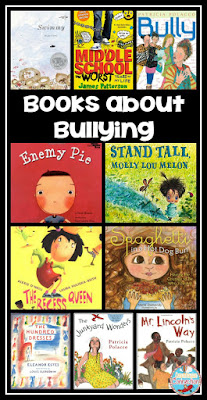 The last topic I thought I'd share is the topic I started with, Bullying. Believe it or not, there are books at all age levels on this topic. For the primary grades, I love Swimmy by Leo Lionni, Goggles by Ezra Jack Keats, Stand Tall Molly Lou Melon and The Recess Queen. In upper elementary, you could pull many of Patricia Polacco's books, Enemy Pie, or Tough Boris. You can also explore this theme with chapter books with The Hundred Dresses, Esperanza Rising, Wonder, and Maniac Magee. There are so many options. I gave you a few thoughts early on about how to involve your teammates. [Here] is the link to the unit for Bully if you're interested. You might modify these ideas for primary grades to be about including others and friendship.
The last topic I thought I'd share is the topic I started with, Bullying. Believe it or not, there are books at all age levels on this topic. For the primary grades, I love Swimmy by Leo Lionni, Goggles by Ezra Jack Keats, Stand Tall Molly Lou Melon and The Recess Queen. In upper elementary, you could pull many of Patricia Polacco's books, Enemy Pie, or Tough Boris. You can also explore this theme with chapter books with The Hundred Dresses, Esperanza Rising, Wonder, and Maniac Magee. There are so many options. I gave you a few thoughts early on about how to involve your teammates. [Here] is the link to the unit for Bully if you're interested. You might modify these ideas for primary grades to be about including others and friendship.

5
One of my favorite authors is Patricia Polacco, and last year, as I was developing materials to use with her book, Bully, I decided I wanted to involve our guidance counselor and technology specialist in some of the lessons I had planned. It just happened to be February when I was using this book, so the timing was just right. Here's an outline of how it worked.
- Our counselor addressed bullying with the fifth grade groups with classroom guidance lessons.
- This book also happened to have cyber bullying themes, so I involved our technology specialist by asking her to come in and team with me with a group discussion on internet safety.
- In the meantime, we wrote about how to handle situations when someone bullies you, and I taught comprehension skills with this book as the mentor text. My students were quite pleased to have their writing pieces highlighted in the classroom guidance lessons.
- Finally, the three of us working together demonstrated to the students that teamwork is important in the classroom AND in the workplace.
Using Literature to Ease Anxiety
Around this time of year, we are analyzing our data to see what interventions need to happen for those not progressing as they should. Anxiety begins to build for teachers and for students since we're talking about progress more. Luckily for us, we can reach for wonderful books to model perseverance, determination, and managing our worries. Salt in His Shoes, Wilma Unlimited, Wilma Jean, Worry Machine, and Wemberly Worried are just a few favorites of mine. The books can get you started with discussions (in guidance and during ELA block), but you might use Today's Meet to bring in technology too. Your tech specialist and guidance counselor will also be deeply involved in helping your group prepare for testing too, so it is certainly good to be prepared so that your students are confident and ready. With Salt in His Shoes, you can talk about things students find challenging. Setting measurable goals can help your students have a sense of accomplishment which also builds confidence.
Using Literature to Build Relationships
 Another great topic for this time of year is friendship. This book collection is all about building relationships. You can share books like Wilfred Gordan McDonald Partridge to demonstrate how we can support and help the elderly. This book is just wonderful for character development, sequencing events, and theme. Students can write about their best older friend, and once again, we can bring in guidance as we talk about aging and responsibility. You might have students interview an "older friend" and create a movie with Animato in your lab.
Another great topic for this time of year is friendship. This book collection is all about building relationships. You can share books like Wilfred Gordan McDonald Partridge to demonstrate how we can support and help the elderly. This book is just wonderful for character development, sequencing events, and theme. Students can write about their best older friend, and once again, we can bring in guidance as we talk about aging and responsibility. You might have students interview an "older friend" and create a movie with Animato in your lab.
Last year, I used the book, Owen and Mzee, to talk about friendship. We researched tsunamis and the countries around the Indian ocean where Owen and Mzee were rescued. I was lucky to find several links to articles and movie clips about them too. Your guidance counselor might talk about uncommon friendships and how important to reach out to those who need a friend. Have you read, Each Kindness by Jacqueline Woodson? Grab your tissues. You will need them. Sometimes challenging books can make us think too. [This set] in my store features Each Kindness, and after sharing it with my students, we created a class "Welcome Book". Having students introduce themselves is a great way to learn trivial things about them that you might not learn otherwise.
Using Literature to Deal with Grief and Loss
Sadly, at some point in our career, we are faced with helping a child through a loss. It might be the family pet, a grandparent, or even worse, a parent or sibling. For my own children, the first death that hit them hard was the loss of our family dog and then, a month later, my father passed. It really caught us all by surprise, and with that experience, I learned that we need to be prepared and we need to prepare kids. This is challenging for everyone, and I am certainly not recommending a month long set of lessons. However, I would try to gather resources for when they are needed. Having a basket of books put together and/or a book list that you can share will help you feel prepared. If you wish to share a book or two, I would recommend Memory String by Eve Bunting and The Tenth Good Thing about Barney by Judith Viorst. By gently touching on the topic, we can help provide a little schema for our students that might help when the time comes. (okay...enough of this topic).
Using Literature to Address Bullying
 The last topic I thought I'd share is the topic I started with, Bullying. Believe it or not, there are books at all age levels on this topic. For the primary grades, I love Swimmy by Leo Lionni, Goggles by Ezra Jack Keats, Stand Tall Molly Lou Melon and The Recess Queen. In upper elementary, you could pull many of Patricia Polacco's books, Enemy Pie, or Tough Boris. You can also explore this theme with chapter books with The Hundred Dresses, Esperanza Rising, Wonder, and Maniac Magee. There are so many options. I gave you a few thoughts early on about how to involve your teammates. [Here] is the link to the unit for Bully if you're interested. You might modify these ideas for primary grades to be about including others and friendship.
The last topic I thought I'd share is the topic I started with, Bullying. Believe it or not, there are books at all age levels on this topic. For the primary grades, I love Swimmy by Leo Lionni, Goggles by Ezra Jack Keats, Stand Tall Molly Lou Melon and The Recess Queen. In upper elementary, you could pull many of Patricia Polacco's books, Enemy Pie, or Tough Boris. You can also explore this theme with chapter books with The Hundred Dresses, Esperanza Rising, Wonder, and Maniac Magee. There are so many options. I gave you a few thoughts early on about how to involve your teammates. [Here] is the link to the unit for Bully if you're interested. You might modify these ideas for primary grades to be about including others and friendship.
How do you work with your colleagues? Have you thought about cross-curricular units? Maybe you pair with a primary teacher for reading buddies? You might choose books with one of these themes each month to work on school climate, or maybe pair your classes for a group project. There are certainly lots of options if you put your heads together. I think it's a great way to use your PLC time to improve school climate, don't you?
Until next time, happy reading and see you next month, literacy fans. Now let's collaborate!


Research: The Key to Unlocking the Door to Discovery
As students work through the process, other reading skills are included such as main idea/details, text features, determining importance, and fact and opinion. As writers, students learn how paragraphs are organized with a topic sentence, supporting detail sentences, and a closing, and how paragraphs come together to explain in depth. So how can we make all of this easier for kids?
The first step in researching is to make the assignment clear and share why researching is important. Kids need to know exactly what is expected right from the beginning, so using anchor charts to outline what they will be doing and the steps involved, modeling how to get started, and what information students will be looking for breaks the assignment down into chewable bites.
Next, list the information sources they are expected to learn to use and demonstrate how to use them. Kids need to know how to use key words and which resources match the needs they have. Will the internet be used? Are kids allowed to search on Google? It's important that the kids know the rules in order to avoid breaking them.
Once the kids have the gameplan, they are ready to dig in, or are they? Well, you probably should model with anchor papers what is expected and demonstrate with a class paper how to conduct research. Outline the steps in a checklist to keep your kids organized and provide due dates for each section. As you ask the kids to do a step, model with the anchor paper how to do it.
As students work through the process, keeping them on task and working toward completion can be a problem. You can avoid that by having them use self evaluations to monitor their own progress. Collect and give feedback on the pieces of working leading up to the final project. If the kids have a rubric to follow, it will help them know how they will be graded.
If you have struggling students, you may find assigning the same topic to a group helpful. Then, you can pull them into a small group for guidance versus spreading yourself thin trying to reach and help them all. I'd suggest preselecting resources as a way to get students started, and you may also want to enlist the help of teaching assistants and/or your school librarian. If you want students to use the internet, you can use QR codes to ensure that your students get to the correct location on the web.
Well, I hope these tips help you the next time you're scratching your head and trying to figure out how to get your kids to the final draft. To help you out, I put together this step-by-step freebie that you can use with any topic. Enjoy!
Happy Researching and see you next month!

Using the Think Aloud Process in Five Easy Steps
- Active listeners
- Engaged with deep thinking
- Working with purpose
- Attentive to detail, and...
- Strategic with their reading
Why is the Think Aloud Process Important?
Beginning readers learn the alphabet and sounds, learn to track print accurately, develop a sight vocabulary, and work through text to read the words on their own. Once they are able to do this, they become transitional readers. Transitional readers focus on developing fluency as they build vocabulary, comprehension skills, and continue working on decoding larger words. Once they are able to read on their own silently, the focus shifts to deeper comprehension and vocabulary development. Throughout this process, Think Aloud is a tool that scaffolds our readers to be able to independently think as readers as skills are achieved.
How Does the Think Aloud Process Work?
To model thinking aloud for your students, the first step is to choose a text with points that can be discussed. Prior to reading the book to your students, go through the text with a post it pad and pen. Mark the places where you want to pause and share your observations and thinking. Note-it is very, very important for the students to also see and work with the text. You can project the book with an Elmo or take photos prior to sharing. There are many books shared on Youtube also, so you may check to see if a title you are planning to use is available there.
 Once your talking points are identified and you've secured a way for your students to access the text, it is time to demonstrate. For my students, I will often use a column notes organizer like the image to the left. This organizer is for the book, Snowflake Bentley. As you share the book with your students, you want them to use all text features including illustrations, captions, sidebars, and the context of the text as the evidence of their thinking, so be sure to ask key questions directed to those features.
Once your talking points are identified and you've secured a way for your students to access the text, it is time to demonstrate. For my students, I will often use a column notes organizer like the image to the left. This organizer is for the book, Snowflake Bentley. As you share the book with your students, you want them to use all text features including illustrations, captions, sidebars, and the context of the text as the evidence of their thinking, so be sure to ask key questions directed to those features.  Some students work well with a visual cue of what they are to think as they're reading. This bookmark helps students trigger that thinking and reminds them of the language we as teachers have used.
Some students work well with a visual cue of what they are to think as they're reading. This bookmark helps students trigger that thinking and reminds them of the language we as teachers have used.Once you have modeled with Snowflake Bentley or a book of your choice, you have to provide an opportunity for practice. Choose another book on a similar theme or one that will extend your lesson, and pair students for the reading experience. "Elbow Partners" are great for talking out our thinking. During this part, provide the bookmark or sticky notes that students can use in their discussion.
The final tip I have is to make sure that you repeat this activity often with new texts. If students have trouble, you may need to stop and model thinking aloud again for students, but you can also direct the thinking with deep questions.
I hope this walk through of the process shows how it can be used with any text. It is so so valuable for our struggling readers.
You can access this freebie using the image below.
Until next month, happy reading AND thinking!


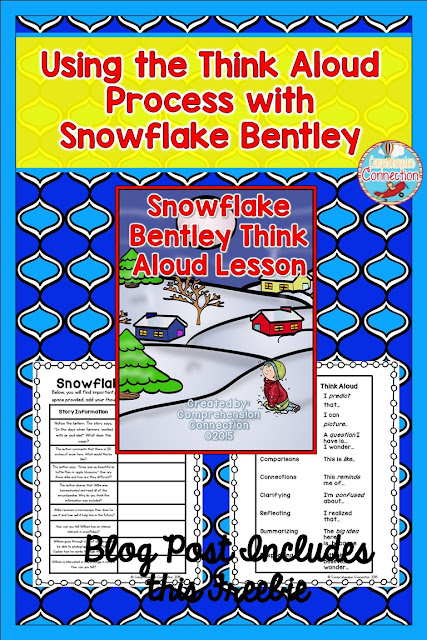 |
| Pin for Later |
Subscribe to:
Posts (Atom)











